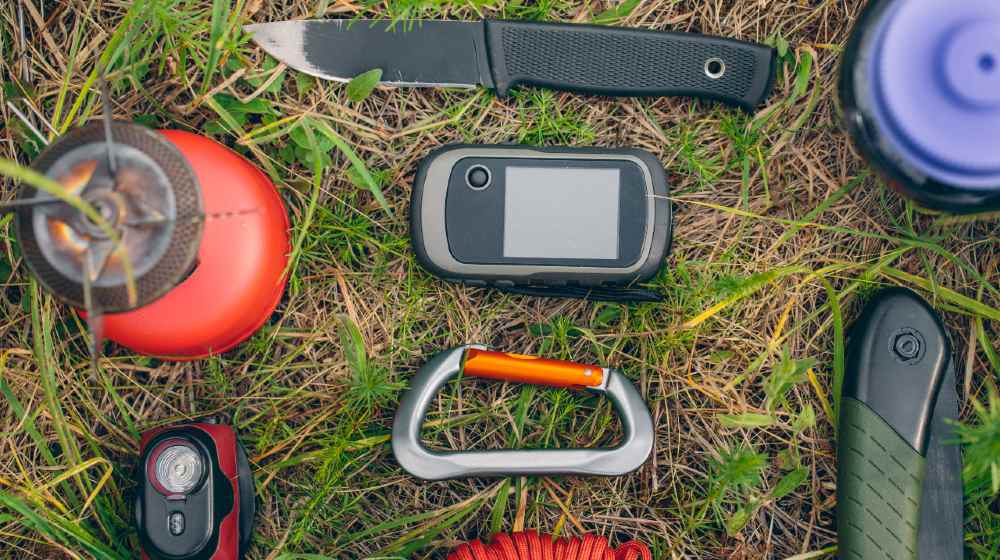Pocket-Sized Survival Kit| There are many commercially available survival kits in stores today. Many of these kits contain items of poor quality.
If at any time, you find yourself having to depend on a man-made item to survive, that item needs to be of excellent quality! One piece of your kit can mean the difference between life and death.
RELATED: How To Build An Urban Survival Kit
Making A Pocket-Sized Survival Kit
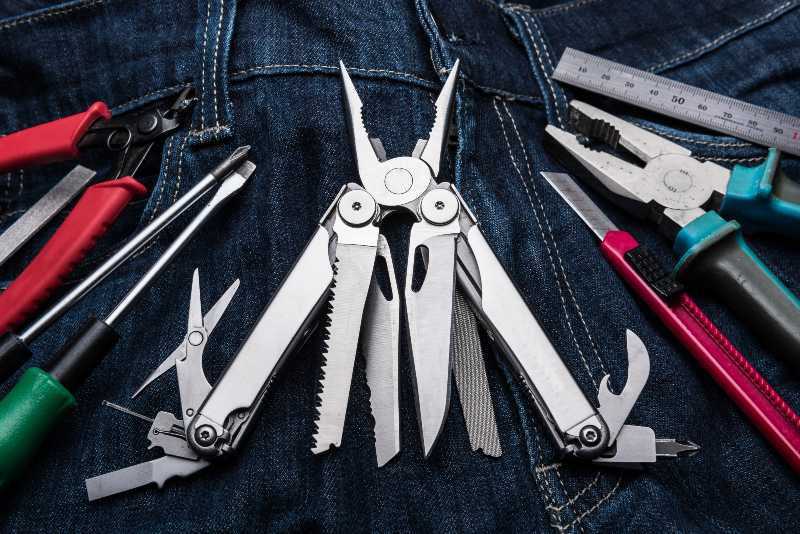
Because we all don’t engage in the same outdoor activities, a one-size-fits-all kit isn’t practical. The items in your kit are relative to the activity you’re engaging in.
If you do decide that you’d rather purchase a ready-made kit from a local retailer or online shop, there’s a good chance you’ll remove or replace some of the items in the kit to better suit your needs.
For example, you may decide to replace fishing hooks with several safety pins, or take out the waterproof matches and put in a small cigarette lighter.
You may not care for wax-covered cotton balls, but opt for cotton balls rubbed with petroleum jelly as better fire tinder.
Something to consider: If half or more of the items in the purchased kit end up being replaced, or discarded altogether, then the price of your ‘purchased’ kit has just risen. In the end, you may realize that it’s cheaper to put together your own kit.
Some important questions to consider at this stage of developing your survival kit:
What are the specific needs related to my activity?
- Day hiking
- Backpacking
- Mountain Biking
- Skiing/Snow-shoeing
Should I carry any first aid items in my kit?
Should I carry any perishable or non-perishable food?
How will I carry the kit?
What is my budget for the items in my kit?
Of course, these are just a sample of things to consider, & at this point, we haven’t touched on the list of specific items to put into your kit. But here we should decide on the size of the kit to be carried, as well as how the kit will be carried on your person.
As mentioned earlier, the type of personal survival kit we’re discussing here can be carried on your person. It should fit into a small metal or plastic container that will fit into a small pouch and can be attached to a belt.
An even smaller, the mini-sized kit can be fashioned, which can be carried on a keychain or hung from a necklace.
A popular choice for small survival kits today is that of the altoid-size tin can. This is both a lightweight and multi-use style container.
The tin can be used to drink water from, as a signaling mirror, a means to make char-cloth with and even boiling water for disinfecting and cooking.
A larger size aluminum box is also something to consider, though it should be noted, because of its larger size, may not be as portable and easy to carry on a belt.
One such container to consider is the Adventurer Aluminum Survival Kit Box sold by Best Glide ASE. A small molle-style pouch or camera-style pouch is useful also, as either can be worn on a belt or attached to a backpack.
Now for the details on what to put in your kit. If you ask 20 survival experts what should go into a survival kit, you may get 20 different lists.
One reason is that not all survival experts have the same background or experience. Experience is one of the greatest influences on what goes into a kit. But if you have no experience or not a great deal of it, you still need to start somewhere.
So, to decide what items to put into a kit, let’s break down the needs of someone in a survival situation.
The needs will focus on five basic headings: cutting tool, combustion device, cover/shelter, container, and cordage. These headings have been taken from Dave Canterbury, author of Survivability For The Common Man.
Dave refers to them as the 5 C’s of survival. In his book, he goes into detail about the system he’s developed, which is comprised of the 10 C’s of survival.
In my opinion, this is the simplest, yet most effective system available today for helping people develop their own survival kits. Let’s go over quickly the 5 C’s of survival.
1. Cutting Tool
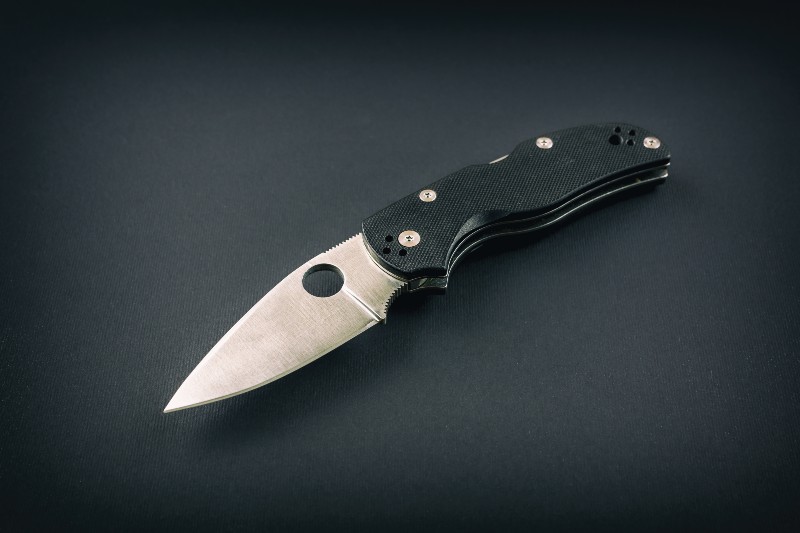
The most important external tool you can carry in a survival situation is a knife. Even a small pocket-style knife is handy to have. It is an essential tool. Even on short hiking trips, I always make a point of carrying a knife.
Many times, I’ve met hikers who don’t carry a knife with them and even make light of needing a knife. It’s these same people who ask to borrow my knife for whatever reason. I can’t remember how many times this has happened.
2. Combustion Device
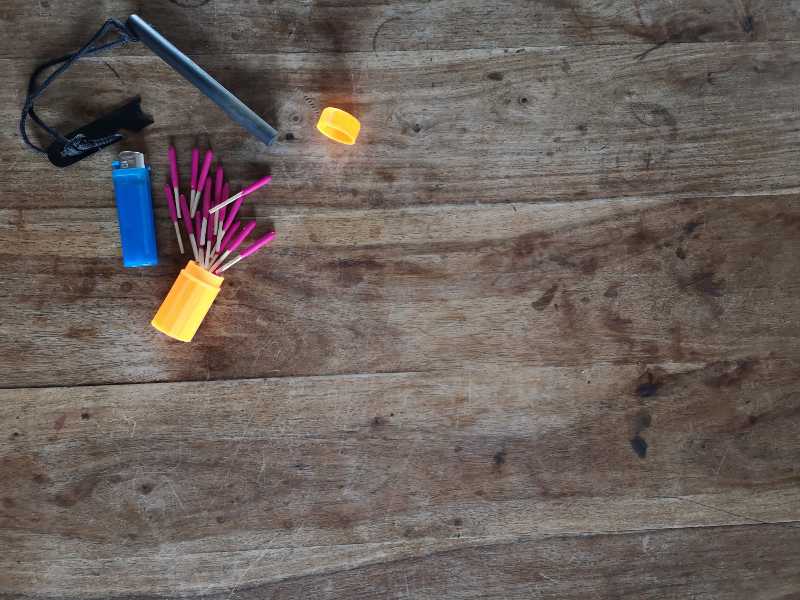
After a knife, the means to start a fire is the next most essential item to carry, even above the shelter. A shelter can be fashioned with outdoor materials, even in the crudest fashion, and still be a life-saver.
When faced with a survival situation, when you need to start a fire, then you must have a dependable means to start a fire.
If the ground and all fire-starting materials around you are wet, then using the bow drill fire method will do you no good. You must have a sure-fire.
Carrying a ferrocerium rod, along with some tinder, such as cotton balls or jute twine, will help you get a fire started to the point where you can dry out other materials to continue that fire. In some cases, a fire may be all you need to stave off the cold.
3. Cover/Shelter
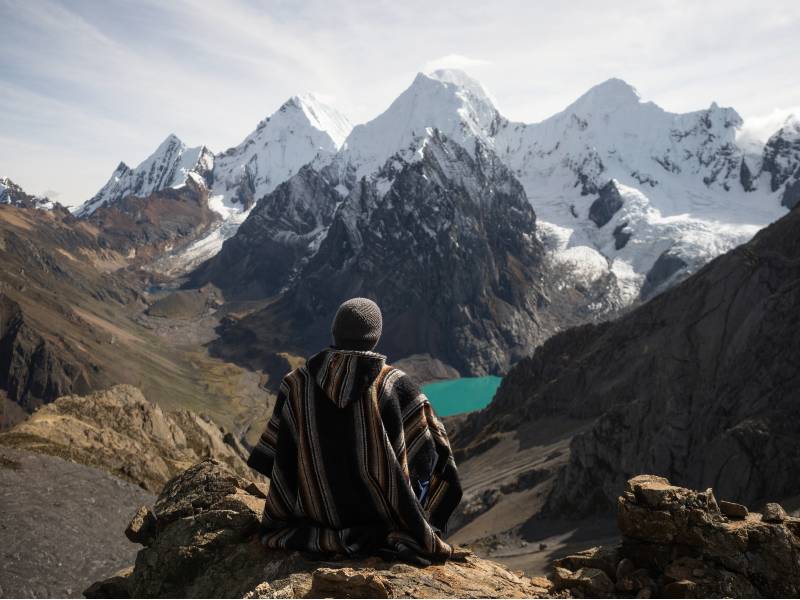
Your first line of defense against the elements; cold, heat, rain, and snow; is the clothes you are wearing. An inexpensive poncho or drum liner can be carried in your mini kit and used as a make-shift shelter or sleeping bag.
4. Container
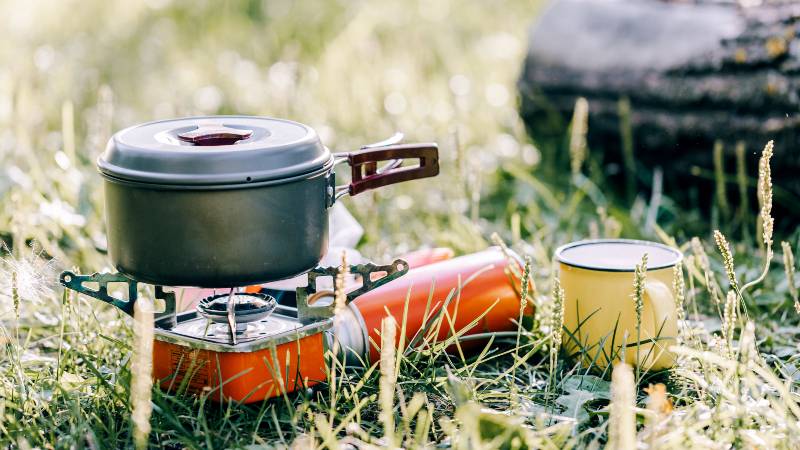
To collect water for drinking, as well as for boiling and cooking, you need a dependable container. To boil water in it, your container needs to be metal.
In a survival scenario, it is possible to boil or heat water in a plastic container to make it safe for drinking. This action should only be used when your life is on the line. Heating plastic to high temperatures releases harmful toxins.
5. Cordage
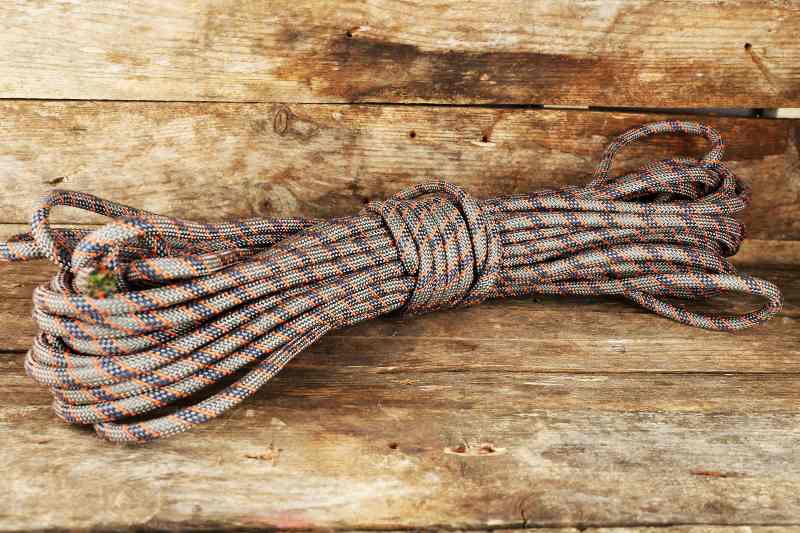
In many instances where you need to build a natural shelter, cordage is a necessity. The ability to make a structure stable is something that cordage can provide.
Rope, paracord, or some type of twine can be used for countless chores and is a valuable item to have in your kit.
As mentioned above, this system is part of a more comprehensive list compiled by Dave Canterbury of The Pathfinder School, LLC. Based upon these 5 simple points, we can then put together a list of items to carry in a personal survival kit.
Following are some suggestions but by no means the only things that can be included in your kit. There is no perfect kit.
- Small folding knife or multi-tool.
- Two scalpel or utility blades.
- Ferrocerium rod and/or cigarette lighter.
- Some Wetfire fire-starting blocks, cotton balls, or jute twine.
- Paracord or twine, such as mason’s line or bank line.
- Space blanket.
- Poncho.
- A signaling mirror.
- A whistle.
- Miniature LED torch, such as a photon light.
- Eyedropper filled with bleach, iodine, or water purifying tablets.S
- Some strong food-grade plastic bags for collecting, purifying, and carrying water.
- Button compass.
- Small bandages, super glue for cuts; antiseptic ointment.
- Cloth or canvas needle.
- Bonded nylon thread or dental floss.
- Tweezers.
- Duct tape.
- Ranger bands or some rubber bands.
- A few fish hooks, swivels, and sinkers; length of fishing line.
- One square foot of aluminum foil folded.
- Wire ties.
- SAS wire saw.
- P-38 can opener.
- Ten or twenty dollar bill.
- Phonecard.
- Extra driver’s license, even if outdated.
As I wrote above, there is no perfect kit. This list is a sampling of what can be put into a personal survival kit. Go through this list, checking those items which you feel would be a good idea to carry in your own kit.
Think about the activities you engage in the most, and the items you believe would benefit you the most when in those situations.
Practice with the items in your kit. After a month, go through the list again, deleting or replacing anything you feel is needed.
Over time, you will develop what you feel is the best kit for you. Your kit of today will probably not be the same kit five years from now unless, of course, you don’t ever actually carry or use the items in your kit.
Ideas change and evolve, preferences are altered over time. You should from time to time think about ways to improve your kit. This means replacing or removing items from the kit.
If you’ve been diligent in practicing with the items in your kit, then no doubt some of those items will need to be replenished now and then.
As time goes on, your knowledge should be increasing in the areas of outdoor survival, as well as your skills. You should be further advanced in your skills two years from now.
Skills such as fire-starting, shelter-building, tool-making, navigation, hunting, and gathering, etc., should be constantly refined. With the increase of knowledge and skill, the evolution of your kit is inevitable.
It’s important to do a regular inventory of the items in your kit. At least once a month, take the time to go through your kit, inspecting every item to ensure that they are in good condition and fully useable. Replenish those items which have been used and are lacking.
In closing, I’d like to emphasize another important idea when it comes to carrying a personal survival kit. When you’re out hiking, backpacking, cycling, or simple car camping, remember that others in your group are dependent on you and your knowledge and skills.
If a problem arises, or one of your group is injured, you may be the one that people look to for help. You should at least have an idea that this is a possibility. In fact, you should expect it.
This means that you’d better be prepared. Don’t leave it up to someone else to have a small kit with them that could help in an emergency.
Don’t assume that another one in your group will have the knowledge and skills necessary to effect a solution to an unforeseen problem.
It’s your responsibility to be prepared; and if you would be prepared to help yourself, then you must be prepared to help others.
I hope this short publication has helped bring some awareness or instruction in how to build your own personal survival kit.
This has by no means been an exhaustive resource on the subject of personal survival, but hopefully, it has given you some ideas on building a kit and put you on the path of always being prepared when you go out into the wilderness.

